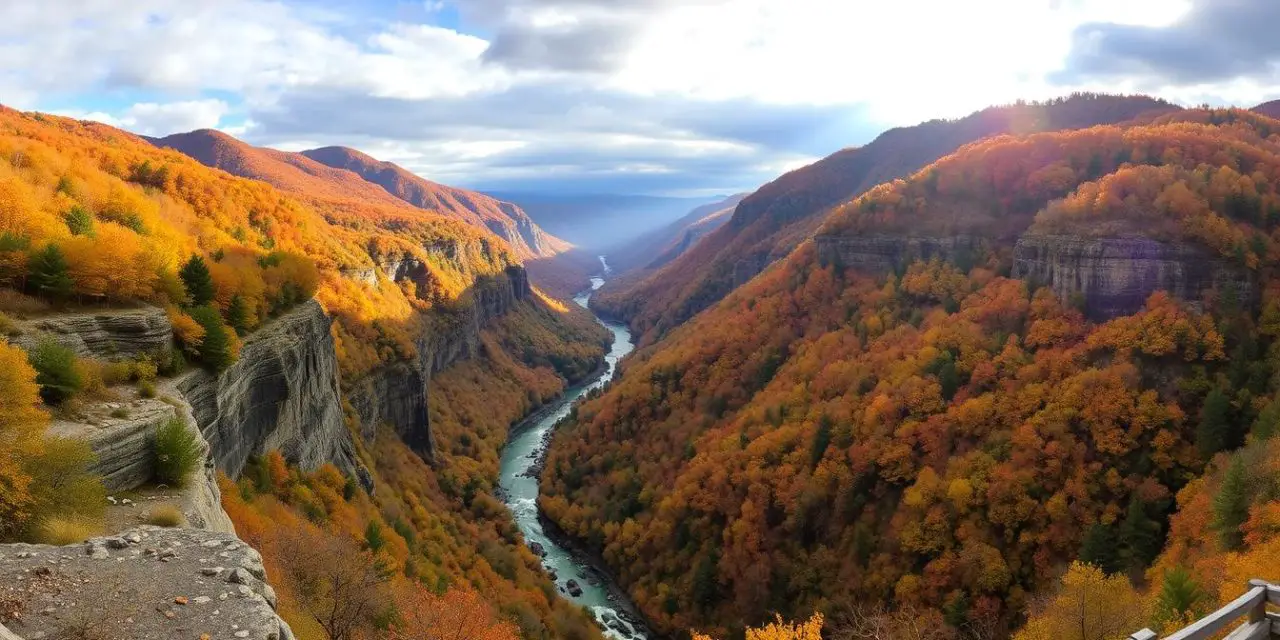Would you like to save this article?
America’s national parks represent our nation’s commitment to preserving natural wonders for future generations. Since Yellowstone became the first national park in 1872, the National Park System has grown to include 63 national parks that showcase the country’s diverse landscapes. In recent years, several new additions have joined this prestigious collection. Let’s explore the newest national parks in the USA, what makes them special, and how you can plan your visit to these magnificent natural treasures.
How National Parks Are Designated
National park designation is a rigorous process that requires an act of Congress and presidential approval. Areas must demonstrate exceptional natural, cultural, or recreational value to receive this prestigious status. The journey from monument or preserve to national park often takes decades of advocacy from local communities, conservation groups, and lawmakers. This designation brings increased protection, funding, and visitor services while boosting tourism to surrounding communities.
The Newest National Parks in the USA
The National Park System continues to evolve, with several new parks receiving the coveted national park designation in recent years. These newest additions showcase diverse landscapes from white sand dunes to river gorges, expanding the variety of natural wonders protected under America’s “Best Idea.” Let’s explore these recent additions to our national heritage.
| National Park | Location | Established | Previous Designation | Size |
| New River Gorge | West Virginia | 2020 | National River (1978) | 70,000+ acres |
| White Sands | New Mexico | 2019 | National Monument (1933) | 145,762 acres |
| Indiana Dunes | Indiana | 2019 | National Lakeshore (1966) | 15,000 acres |
| Gateway Arch | Missouri | 2018 | National Memorial (1935) | 91 acres |
| Pinnacles | California | 2013 | National Monument (1908) | 26,000 acres |
1. New River Gorge National Park and Preserve (2020)
Location and Features
As America’s newest national park, New River Gorge National Park and Preserve in West Virginia spans over 70,000 acres along the New River. Despite its name, the New River is actually one of the oldest rivers on the continent. The park features a deep canyon carved by the river, lush forests, and the iconic New River Gorge Bridge—one of the longest steel span bridges in the Western Hemisphere.
Activities and Experiences
The park is a paradise for outdoor enthusiasts, offering world-class whitewater rafting with challenging Class IV and V rapids. Rock climbers can tackle over 1,500 established routes on the hard sandstone cliffs. Hikers have access to more than 100 miles of trails, while mountain bikers can explore a network of paths stretching more than a dozen miles.
Must-See Attractions
- New River Gorge Bridge – Spectacular views from the Canyon Rim Visitor Center
- Grandview – Panoramic vistas of the horseshoe bend in the New River
- Sandstone Falls – The largest waterfall on the New River
- Thurmond – Historic coal mining ghost town
- Long Point Trail – Offers the most iconic view of the bridge
Best Time to Visit
The park is open year-round, but each season offers unique experiences:
- Spring: Wildflowers bloom and waterfalls reach peak flow
- Summer: Perfect for whitewater rafting and rock climbing
- Fall: Spectacular autumn foliage transforms the gorge
- Winter: Peaceful solitude and occasional snow-covered landscapes
Plan Your New River Gorge Adventure
Ready to experience the thrills of America’s newest national park? Get essential information for your visit.
2. White Sands National Park (2019)
Location and Features
White Sands National Park in southern New Mexico protects the world’s largest gypsum dune field, covering 275 square miles of desert. The brilliant white sands create an otherworldly landscape that shifts in color throughout the day—from bright white under the midday sun to golden orange at sunset and cool lavender as twilight falls. The park is surrounded by the White Sands Missile Range, creating a unique juxtaposition of natural beauty and military history.
Activities and Experiences
Visitors can hike designated trails through the dunes, go sledding down the powdery slopes on plastic discs available at the gift shop, or enjoy backcountry camping among the glistening dunes. The park also offers ranger-led sunset strolls, full-moon hikes, and stargazing events that showcase the pristine night skies.
Visitor Tip: White Sands National Park occasionally closes for short periods due to missile testing at the adjacent White Sands Missile Range. Check the park’s website before planning your visit to avoid disappointment.
3. Indiana Dunes National Park (2019)
Location and Features
Indiana Dunes National Park stretches along 15 miles of the southern shore of Lake Michigan. This 15,000-acre park features a diverse landscape of sand dunes, wetlands, prairies, rivers, and forests. What makes this park unique is its urban setting—Chicago’s skyline is visible across the lake, and the park is surrounded by industrial areas including a power plant and steel mill.
Biodiversity and Ecosystems
Despite its industrial surroundings, Indiana Dunes boasts incredible biodiversity that rivals Hawaii. The park is home to over 1,100 native plant species, 350 species of birds, and diverse wildlife. Ecologists have studied this area for over a century due to its remarkable variety of habitats and ecological succession patterns.
Activities and Experiences
Visitors can enjoy swimming and sunbathing along the Lake Michigan shoreline, hiking more than 50 miles of trails through various ecosystems, bird watching, and cross-country skiing in winter. The West Beach Trails offer a perfect mix of lake swimming, birding, wildflowers, and views of both Lake Michigan and Long Lake.
4. Gateway Arch National Park (2018)
Location and Features
Gateway Arch National Park, located in the heart of St. Louis, Missouri, is one of America’s most urban national parks. The centerpiece is the iconic 630-foot stainless steel arch designed by architect Eero Saarinen, symbolizing America’s westward expansion. The park also includes the Old Courthouse where the Dred Scott case was tried and 91 acres along the Mississippi River.
History and Significance
Originally established as the Jefferson National Expansion Memorial in 1935, the area was redesignated as Gateway Arch National Park in 2018. The arch itself was completed in 1965. The park commemorates several aspects of American history: the Louisiana Purchase, the westward movement of American explorers and pioneers, and the debate over slavery raised in the Dred Scott case.
Visitor Experiences
Visitors can take a tram ride to the top of the arch for panoramic views of St. Louis and the Mississippi River, explore the newly renovated underground museum that chronicles America’s westward expansion, and enjoy riverboat cruises on the Mississippi. The museum presents a more nuanced view of westward expansion, acknowledging its complex and sometimes controversial history.
5. Pinnacles National Park (2013)
Location and Features
Located in central California about 80 miles southeast of San Francisco, Pinnacles National Park protects 26,000 acres of unique geological formations. The park features the eroded remnants of an ancient volcano that erupted approximately 23 million years ago and was then split by the movement of the San Andreas Fault. The distinctive spires, rock formations, talus caves, and monoliths give the park its name.
Wildlife and Conservation
Pinnacles is an important release site for the endangered California condor recovery program. The park provides critical habitat for these massive birds, which can be spotted soaring above the rock formations. The park is also home to over 400 bee species (one of the highest densities of bee species in North America), diverse bird populations, and unique talus caves that house several bat species.
Activities and Experiences
The park offers excellent opportunities for rock climbing, with routes suitable for various skill levels. Hikers can explore over 30 miles of trails that wind through chaparral, oak woodlands, and canyon bottoms. The Bear Gulch and Balconies caves are popular attractions, formed by fallen boulders wedged in narrow canyons. Stargazing is exceptional due to the park’s distance from major light pollution sources.
Best Trails
- Condor Gulch Trail – Offers potential condor sightings
- High Peaks Trail – Spectacular views of the pinnacle formations
- Bear Gulch Cave Trail – Leads to unique talus caves
- Moses Spring and Rim Trail Loop – Moderate hike with diverse scenery
- Balconies Cave Trail – Explores another impressive cave system
Visitor Tips
- The park has two entrances (east and west) with no road connecting them
- Summer temperatures can exceed 100°F; spring and fall offer milder weather
- Bring a flashlight if you plan to explore the caves
- Check cave status before visiting as they sometimes close to protect bat populations
- Limited cell service throughout the park
Other Recent National Park Designations
While the five parks above represent the most recent additions to the National Park System, several other parks received their designation within the past two decades. These include:
Great Sand Dunes (2004)
Located in Colorado, Great Sand Dunes National Park features the tallest sand dunes in North America, rising up to 750 feet. The park offers a unique opportunity to sandboard down steep dune peaks with snow-capped mountains in the background. After playing in the sand, visitors can cool off in seasonal Medano Creek.
Congaree (2003)
South Carolina’s Congaree National Park protects the largest intact expanse of old-growth bottomland hardwood forest in the southeastern United States. The park features a network of boardwalks and canoe trails that wind through stands of loblolly pine, persimmon, water tupelo, and bald cypress trees.
Cuyahoga Valley (2000)
Located between Cleveland and Akron in Ohio, Cuyahoga Valley National Park serves as an urban oasis with waterfalls, forests, and the historic Ohio & Erie Canal Towpath Trail. The Cuyahoga Valley Scenic Railroad offers a unique way to experience the park’s natural beauty.
Economic and Environmental Impact of New National Parks
The designation of a new national park brings significant economic benefits to surrounding communities while also enhancing environmental protection. When an area receives national park status, it typically sees increased visitation, tourism spending, and job creation.
Economic Benefits
New River Gorge National Park saw visitor numbers increase from around 1 million to 1.5 million annually after its redesignation as a national park in 2020. This 50% increase brought substantial economic benefits to local communities in West Virginia. Similarly, other newly designated parks have experienced tourism boosts, creating jobs in hospitality, food service, retail, and outdoor recreation industries.
Environmental Protection
National park status brings the highest level of federal land protection, ensuring these natural treasures are preserved for future generations. The designation often comes with increased funding for conservation efforts, scientific research, and habitat restoration. This enhanced protection helps safeguard biodiversity, preserve cultural resources, and maintain ecosystem services.
“National parks are the best idea we ever had. Absolutely American, absolutely democratic, they reflect us at our best rather than our worst.”
– Wallace Stegner, American novelist and environmentalist
Future National Parks: What’s Next?
The National Park System continues to evolve, with several sites currently under consideration for national park status. These potential future additions would further diversify the landscapes protected under America’s “Best Idea.”
Leading Candidates
Several existing national monuments and preserves are frequently mentioned as candidates for elevation to national park status:
Craters of the Moon (Idaho)
Currently a National Monument and Preserve, this otherworldly landscape of volcanic features could become Idaho’s first national park. Its unique lava fields, cinder cones, and lava tubes make it a strong candidate.
Chiricahua (Arizona)
Known as the “Wonderland of Rocks,” Chiricahua National Monument features spectacular rock formations and rich biodiversity. Local advocates have pushed for national park status to increase protection and visitation.
Delaware Water Gap (Pennsylvania/New Jersey)
This National Recreation Area along the Delaware River features dramatic cliffs, waterfalls, and abundant recreational opportunities. Its proximity to major population centers makes it an accessible candidate for national park designation.
Planning Your Visit to America’s Newest National Parks
Visiting America’s newest national parks requires some planning to ensure the best experience. Here are essential tips to help you prepare for your adventure:
Reservation Systems and Fees
Most of the newest national parks require entrance fees, though several offer free admission. The America the Beautiful Annual Pass ($80) provides access to all national parks and federal recreational lands for a full year—an excellent value for frequent visitors.
| National Park | Entrance Fee | Reservation Required? | Camping Options |
| New River Gorge | Free | No, except for group campsites | Primitive campgrounds, no hookups |
| White Sands | $25 per vehicle | No, except for backcountry camping | Backcountry camping only |
| Indiana Dunes | $25 per vehicle | No | Dunewood Campground |
| Gateway Arch | Free (tram ride: $19) | Recommended for tram | None |
| Pinnacles | $30 per vehicle | No, but campground reservations recommended | Pinnacles Campground |
Accommodation Options
Lodging options vary widely among the newest national parks. Gateway Arch and Indiana Dunes are near urban areas with numerous hotels, while New River Gorge, White Sands, and Pinnacles offer more limited accommodations in nearby communities. Camping is available in most parks, though facilities range from developed campgrounds to primitive backcountry sites.
Seasonal Considerations
Each park offers unique experiences throughout the year. Spring brings wildflowers to Pinnacles and New River Gorge, while fall showcases spectacular foliage. Summer is ideal for water activities at Indiana Dunes and New River Gorge, though desert parks like White Sands can be extremely hot. Winter offers solitude in many parks but may limit access to certain areas.
Visitor Tip: Always check park websites for current conditions, alerts, and seasonal closures before your visit. Some parks have limited cell service, so download maps and information in advance.
Preserving America’s Natural Treasures
America’s newest national parks represent our nation’s ongoing commitment to preserving natural and cultural treasures for future generations. From the towering cliffs of New River Gorge to the glistening white dunes of White Sands, these parks showcase the incredible diversity of America’s landscapes.
As visitors, we play a crucial role in protecting these special places. By practicing Leave No Trace principles, respecting wildlife and cultural resources, and supporting conservation efforts, we ensure that these newest additions to our National Park System will continue to inspire and educate for generations to come.
Whether you’re planning a dedicated national park road trip or incorporating these destinations into your travel itinerary, America’s newest national parks offer fresh perspectives on our natural heritage and opportunities for adventure, education, and renewal.





